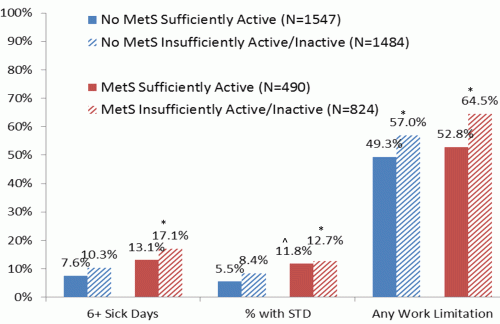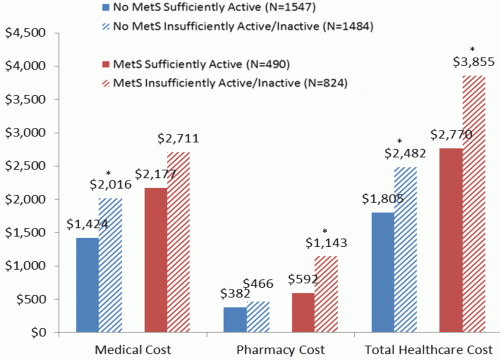Workers who exercise lower health risks, cost less

Get moving: just 20 minutes of exercise a day dramatically lowers the risk of diabetes and heart disease, even for employees with a high risk of developing those conditions.
A University of Michigan study looked at the impact of exercise on 4,345 employees in a financial services company that had just started a workplace wellness program. Roughly 30 percent of employees were high risk and suffering from metabolic syndrome, a dangerous cluster of risk factors associated with diabetes and heart disease. Overall, about 34 percent of U.S. adults have metabolic syndrome.
The study found that when the high-risk employees accumulated the government-recommended 150 minutes of moderate-intensity exercise a week, their health care costs and productivity equaled that of healthy employees who didn't exercise enough, said Alyssa Schultz, a researcher at the Health Management Research Center in the U-M School of Kinesiology.
"It was a real surprise, the level of protection physical activity gave to people with metabolic syndrome," Schultz said. "We can't control our family history and some health indicators such as cholesterol can be difficult to manage, but if individuals get enough exercise, the negative impacts of metabolic syndrome could be mitigated."
This is also good news for companies trying to cut health care costs, Schultz said. Employees with metabolic syndrome who exercised enough cost $2,770 in total health care annually, compared to $3,855 for workers with metabolic syndrome who didn't exercise enough. Pharmacy costs alone were twice as much.
With a bit of imagination, employers can develop and implement low cost interventions and programs that make it easy for workers to exercise on the job, Schultz said.

Some examples include walking groups, signs reminding employees to take the stairs rather than the elevator, or developing and distributing maps of walking routes that fit into a lunch hour, she said.
"These can give a huge return for all employees and for employers," Schultz said.
If you can only do 10 minutes a day, instead of the government-recommended 20, that's fine too, Schultz said. Any amount of exercise is better than none. As long as a person does something for "more than zero minutes" there are benefits in terms of health and economic outcomes in the workplace.
Chin-Yu Chen and Xingquan Li, researchers at the Health Management Research Center, are also co-authors on the study. "The Association of Self-Reported Employee Physical Activity with Metabolic Syndrome, Health Care Costs, Absenteeism, and Presenteeism," appears in the Journal of Occupational and Environmental Medicine.
More information: "The association of self-reported employee physical activity with metabolic syndrome, health care costs, absenteeism, and presenteeism." J Occup Environ Med. 2014 Sep;56(9):919-26. DOI: 10.1097/JOM.0000000000000257.
















